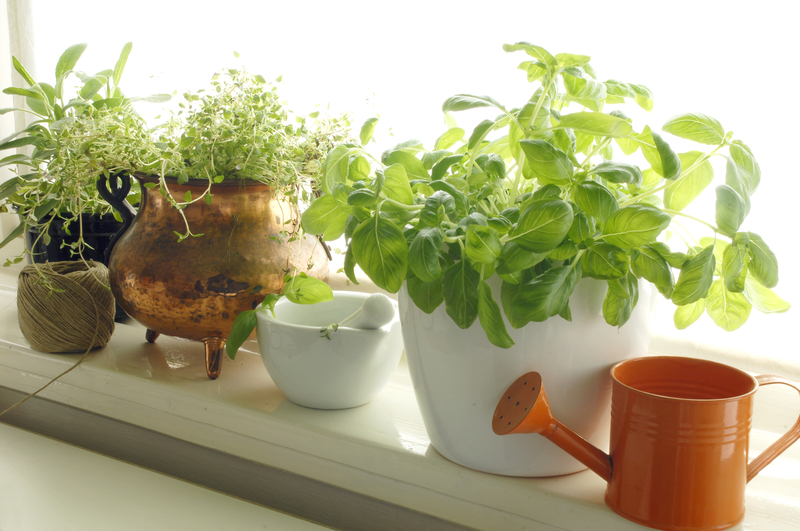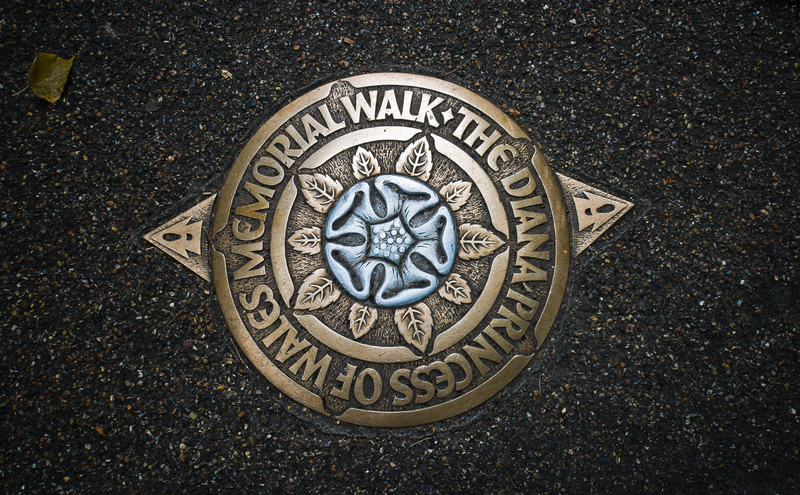The Ultimate Guide to Small-Sized Evergreen Trees for Gardens
Transforming your garden into a lush, year-round retreat is easier than ever with the right selection of small-sized evergreen trees. Whether you have a compact urban yard or need privacy for your property, evergreens offer vibrant color and structure that endure throughout the seasons. In this comprehensive guide, we'll explore top varieties, essential care tips, and landscaping inspiration. Get ready to discover everything you need to create a charming, low-maintenance garden oasis with small evergreen trees.
Why Choose Small-Sized Evergreen Trees for Your Garden?
Evergreen trees play a vital role in landscape design. Their foliage remains lush and verdant all year, providing color even in the depths of winter. Small evergreen trees (typically under 25 feet tall at maturity) are especially valuable for:
- Adding visual interest and structure to small gardens or limited spaces
- Offering privacy without overwhelming the landscape
- Acting as windbreaks and noise barriers
- Reducing maintenance compared to larger trees
- Complementing flower beds and hardscapes
Compact evergreens are perfect for urban gardens, patios, narrow borders, and even large containers. Many varieties also boast attractive bark, aromatic foliage, and ornamental cones or berries, enriching your garden's biodiversity.

Top Benefits of Growing Small Evergreen Trees
- Year-Round Color: Small evergreens add a permanent splash of green, blue, or gold to the landscape.
- Wildlife Habitat: Many varieties support birds, pollinators, and other beneficial creatures.
- Versatility: Compact in size, they fit into gardens of all dimensions and can be used for screening, hedging, or as specimen trees.
- Low Maintenance: Most small-sized evergreens are hardy, resilient, and require minimal pruning.
- Soil Erosion Control: Their root systems help stabilize soil on slopes or embankments.
How to Choose the Best Small-Sized Evergreen Trees for Your Garden
When planning your garden with small evergreen trees, consider the following factors to ensure success:
1. Climate Zone and Soil Type
Check your USDA hardiness zone and soil conditions before selecting a tree species. Some small conifers, for instance, thrive in sandy soils while others, like Ilex (holly), prefer slightly acidic earth. Always verify the tree's requirements before planting.
2. Sunlight and Watering Needs
Small evergreens vary in their need for sun and water. Dwarf spruces might need full sun, but certain yews tolerate shade. Understanding your garden's microclimate will help you choose the best variety.
3. Growth Rate and Mature Size
Compact evergreens grow at different rates. Some remain naturally dwarf, while others may outgrow their space if not managed. Always consider height, spread, and annual growth to prevent overcrowding.
4. Purpose in the Landscape
Decide whether you'll use small evergreen trees for screening, as focal points, or as part of a mixed border. Their form, color, and texture should complement other garden elements.
5. Pest and Disease Resistance
Opt for cultivars known for their disease and pest resistance, ensuring your trees remain attractive with minimal intervention.
The Best Small-Sized Evergreen Trees for Gardens
Ready to start planting? Below is a curated list of the most reliable and attractive compact evergreen trees ideal for small gardens. Each offers unique features perfect for landscaping brilliance.
1. Dwarf Alberta Spruce (Picea glauca 'Conica')
- Mature Size: 6-12 feet high, 3-5 feet wide
- Growth Habit: Dense, perfectly conical
- Best for: Formal gardens, entryways, containers
- Light: Full sun to partial shade
- Hardiness Zones: 2-8
The quintessential "mini Christmas tree," this evergreen is ideal for foundation planting, compact borders, and pots.
2. Japanese Holly (Ilex crenata)
- Mature Size: 6-10 feet high, 5-6 feet wide
- Growth Habit: Rounded or columnar
- Best for: Hedges, accent planting, shade gardens
- Light: Sun to partial shade
- Hardiness Zones: 5-8
Delicate, boxwood-like foliage provides a polished look in small gardens. Produces black berries attractive to birds.
3. Hinoki Cypress (Chamaecyparis obtusa)
- Mature Size: 6-15 feet high, 4-8 feet wide (cultivar dependent)
- Growth Habit: Graceful, layered branches with fan-shaped foliage
- Best for: Japanese-inspired gardens, specimen planting
- Light: Full sun to light shade
- Hardiness Zones: 4-8
'Nana Gracilis' is a compact variety popular for its sculptural beauty and rich green color.
4. Dwarf Eastern White Pine (Pinus strobus 'Nana')
- Mature Size: 4-7 feet tall, 6-10 feet wide
- Growth Habit: Densely branched, soft needles
- Best for: Borders, rock gardens, informal plantings
- Light: Full sun
- Hardiness Zones: 3-7
Drought tolerant and deer resistant, this small evergreen brings soft texture to the landscape year-round.
5. Korean Fir (Abies koreana)
- Mature Size: 10-15 feet tall, 6-8 feet wide
- Growth Habit: Pyramidal, often broader than tall in maturity
- Best for: Focal points, woodland gardens
- Light: Full sun to partial shade
- Hardiness Zones: 5-7
This fir produces stunning purple-blue cones and glossy, dark green needles for all-season appeal.
6. Dwarf Southern Magnolia (Magnolia grandiflora 'Little Gem')
- Mature Size: 12-20 feet high, 8-12 feet wide
- Growth Habit: Upright, narrow form
- Best for: Specimen trees, foundation plantings
- Light: Full sun to partial shade
- Hardiness Zones: 7-9
Enjoy fragrant, creamy blooms and glossy evergreen foliage in a more manageable size.
7. Mountain Laurel (Kalmia latifolia)
- Mature Size: 5-15 feet tall, 5-10 feet wide
- Growth Habit: Multi-stemmed, rounded shrub/tree
- Best for: Woodland and naturalistic gardens
- Light: Partial shade
- Hardiness Zones: 4-9
Prized for its shiny, evergreen leaves and showy clusters of springtime flowers.
8. Blue Star Juniper (Juniperus squamata 'Blue Star')
- Mature Size: 2-3 feet tall, 3-4 feet wide
- Growth Habit: Dense, spreading mounds
- Best for: Groundcovers, rockeries, edge planting
- Light: Full sun
- Hardiness Zones: 4-8
Known for its striking, silvery-blue foliage, this is an excellent choice for small spots and containers.
9. Boxwood (Buxus sempervirens)
- Mature Size: 4-6 feet tall, 4-6 feet wide (dwarf varieties smaller)
- Growth Habit: Dense, rounded
- Best for: Hedges, borders, topiary
- Light: Full sun to shade
- Hardiness Zones: 5-9
Boxwoods are classics for formal gardens and can be pruned into neat shapes, making them ideal for small spaces.
10. Dwarf Mugo Pine (Pinus mugo 'Pumilio')
- Mature Size: 3-5 feet tall, 6-10 feet wide
- Growth Habit: Low, spreading mound
- Best for: Rock gardens, slopes, small spaces
- Light: Full sun
- Hardiness Zones: 2-7
Well-suited to alpine and gravel gardens, this tough evergreen tolerates poor soils and drought.
Planting and Growing Tips for Small Evergreen Trees
- Proper Placement: Always allow room for the mature width and shape of your small-sized evergreen tree to avoid crowding and promote healthy growth.
- Soil Preparation: Amend planting holes with compost. Test and adjust pH as recommended for the selected tree variety.
- Watering: Water deeply after planting and regularly for the first growing season. Established evergreens are often drought-tolerant.
- Mulching: Apply mulch around the root zone to conserve moisture, regulate temperature, and improve soil quality.
- Pruning: Minimal pruning is required, typically to remove dead or damaged branches and maintain desired shape.
- Fertilizing: Use a balanced, slow-release fertilizer suited for evergreen trees in spring if growth seems sluggish.
Landscaping Ideas: Creative Ways to Use Small Evergreen Trees
- Accent Points: Use single dwarf conifers as living sculptures or focal points beside paths or garden entrances.
- Mixed Borders: Combine compact evergreen trees with flowering shrubs and perennials for all-season appeal.
- Privacy Screens: Plant a row of columnar or bushy small evergreen trees to create natural, year-round privacy.
- Container Gardens: Cultivate dwarf evergreens in large pots for patios, decks, or balconies.
- Foundation Plantings: Select compact varieties like Holly or Boxwood to soften foundations or frame windows.
- Rock and Zen Gardens: Pair Hinoki Cypress or Blue Star Juniper with stones and gravel for a tranquil oasis.

Frequently Asked Questions About Small-Sized Evergreen Trees
Are there evergreens that stay small naturally?
Yes! Many cultivars have been bred specifically for dwarf size and slow growth. Look for words like "dwarf," "miniature," or "compact" in plant names when shopping.
How close can I plant small evergreen trees?
Always plan for the mature width of each tree to prevent overcrowding. For privacy screens, stagger plants in a zigzag pattern for fuller coverage.
Can I prune my small evergreen tree to keep it small?
Light, regular pruning helps maintain shape and size, but excessive cutting may damage the tree. It's best to choose naturally compact varieties when possible.
Do small evergreens have special watering needs?
Deep, infrequent watering is better than shallow, regular watering. This practice encourages trees to establish deeper, stronger roots.
Which evergreens are safe for pets and children?
While many evergreens are non-toxic, some--such as yews--are poisonous if ingested. Research your chosen species if you have pets or small children and opt for safe varieties like Boxwood or Dwarf Alberta Spruce.
Conclusion: Elevate Your Garden with Small-Sized Evergreen Trees
Small-sized evergreen trees are the ultimate garden solution for lasting beauty, privacy, and structure. Whether you're accenting a patio, filling a bare border, or creating a vibrant green backdrop, these reliable trees deliver unmatched appeal in any landscape.
- Choose the right species for your climate, space, and intended use.
- Give them a good start with proper planting and early care.
- Enjoy a low-maintenance landscape that looks fantastic every season.
Explore your local garden center or reputable online nursery for the latest compact evergreen varieties. Invest in small-sized evergreen trees today, and enjoy a lush, inviting garden all year long!
Ready to design your landscape with petite evergreens? Have further questions or tips to share? Leave a comment below and join the conversation!